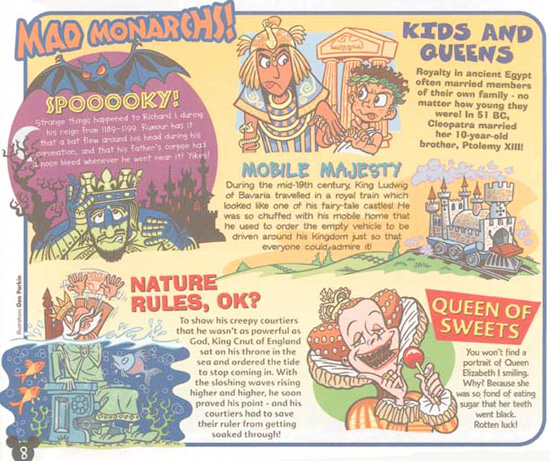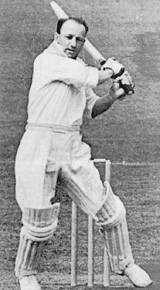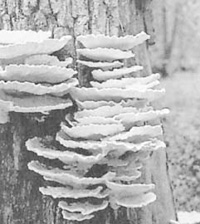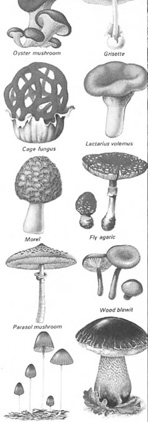| Hello Children,
Next week is Vesak. May all the three-fold blessings of Vesak
be upon you all. Are you helping or making beautiful Vesak kudoos for this
year? Try something new by using your imagination. Every one of you have
creative talent but many don't make full use of it. Just like the Vesak
kudoo or the full moon do you know you too could be a light to others.
How? Be patient and kind. Don't be proud or rude. Be ready to
forgive and do good deeds by helping those who don't have. One more thing
when you do good don't expect anything in return. Then you will be a living
light for Vesak.
Until next time
Aunty Sunshine

YOUTH
Bradman the great cricketer
Youth to the fore
Flowerless Plants
YOUTH
Glowing in happiness
Wrapped up in beauty
Skimming in the milky way
Clothed in feathers.
Whispering in darkness
Brimming with hopes
Growing in stature
Flourished with strength.
Bathing in sunshine
As happy as larks
Frolicking in meadows
As frisky as lambs.
Trapped in a whirl-pool
Swaying in the deep seas
Caught in a whirl-wind
Whipping round like a whirligig
Fluttering in joy
Anxious as ever
But, frisky little birds
Do watchout before you fly.
S.R.M. Alexandra Dharmaratne
Kotahena
Bradman the great cricketer
Today people all over the world are becoming more interested in cricket.
The first test match of the world was played in Melbourne between England
and Australia from 15th to 17th March 1877.  Australia
won this match by 45 runs but was defeated in the second test match played
at the same place. And since then more than 800 players have taken part
in the test matches played all over the world. Donald Bradman, a famous
Australian cricketer scored 29 centuries. People used to call this world
famous cricketer 'a run making machine'. Australia
won this match by 45 runs but was defeated in the second test match played
at the same place. And since then more than 800 players have taken part
in the test matches played all over the world. Donald Bradman, a famous
Australian cricketer scored 29 centuries. People used to call this world
famous cricketer 'a run making machine'.
He was born on August 27, 1908. He played his first test match against
England in 1928-29. He made 18 runs in the first inning and only one run
in the second innings. Therefore, he was not included in the team for the
second test. In the third test he made 79 and 112 runs and there after
he played in every test team till 1948.
Bradman played 80 innings in 52 test matches from 1928 to 1948. He remained
'not out' in 10 innings and made a total of 6996 runs. His highest score
was 334. In 24 test matches, he was the captain of his country's team.
Under his captaincy, Australia never lost even a single series. In 1930,
while playing against England at Leeds, he established a new record by
making 309 runs in one day's play. In the same series he established another
world record by making 974 runs in one series.
In the same series he made a double century in 214' minutes, establishing
a third world record. He was out for a duck only seven times during all
the test matches he played. He could not make a single run in the last
innings of the last test match of his life. Generations to come will never
forget this great cricketer.
Farrah Farook
Hillwood College
Kandy
Stamp News 68
Youth to the fore
Today, May 23 is National Youth Day. Five thousand youth will participate
in a walk and a national level conference will be held to mark this day.
Hereafter, every year programmes will be held on this day to make the youth
aware of their rights and responsibilities.
Youth forms a very important section in a country's population. In Sri
Lanka we boast of a youthful  population. population.
Youth and youth activities was the subject of a 15 cents stamp issued
on April 27, 1978. The stamp featured a youth running forward along a guided
path and brought into focus the National Youth Service Council (NYSC) which
was set up on January 23, 1969 under the provisions of the Voluntary National
Youth Service Council Act of 1967. Among the aims of the NYSC were the
formation of schemes of voluntary national service without regard to class,
race or religion, creating a sense of discipline and an awareness of social
and economic problems and building a sense of dignity of labour amongst
the youth. For the past 30 years the NYSC has implemented a large number
of youth projects directed towards social welfare, social rehabilitation
and economic development. It has been active in conducting vocational training
schemes and promoting youth talent in sports and the performing arts.
In 1979 another Act of Parliament - the National Youth Service Council
Act - gave more powers to the Council enabling it to plan and implement
more and more youth promotional activities.
Today, the NYSC Centre in Maharagama is a hive of activity. The well
equipped centre is a gift from the Japanese government to mark the International
Youth Year (1985). The complex set up in a land area of 34,000 sq metres,
comprises of an administration and exhibition building, a multi-purpose
hall, a training centre and a hostel. The 550 seat auditorium is regularly
used for sports and cultural activities. It has the capacity to house 1500
persons. A big outdoor stadium has also been erected.
The ceremonial opening of the National Youth Centre was marked by the
release of a Re 1 stamp on January 31, 1988. It carried an artist's impression
of the Centre.
The 20th anniversary youth services was the theme of a 75 cents stamp
issued on July 15, 1987. It marked the completion of two decades since
the enactment of the Voluntary National Youth Service Act, referred to
above. The event coincided with the completion of the Maharagama NYSC Centre
 Flowerless
Plants Flowerless
Plants
Fungi
Fungi have no green chlorophyll to make their own food. This means that
they must feed on other plants or animals, dead or alive.
Fungi living on dead material are called saprophytes. This could be
anything from neglected food to a dead tree. Those which attack living
things are called parasites. Some toadstools attack living trees.  Garden
plants, like roses, also suffer from fungus growth. Garden
plants, like roses, also suffer from fungus growth.
Reproduction
Fungi produce spores, not seeds. These are minute and are produced in
enormous numbers. In its short life the giant puffball may produce as many
as seven thousand million spores.
Because of these high numbers of spores and the ease with which they
travel through the air, they can settle almost anywhere. If the food is
then suitable, and there is enough moisture, the spore will germinate.
A spore sends out a fine thread, called a hypha. This branches through
the food to form a white, fluffy layer looking like cotton wool. This is
called mycelium, and is the actual fungus plant. Mushroom growers call
it "spawn". It can be seen on mouldy food, in leaf mould, and
under the bark of dead trees.
Out of the mycelium grows the fruit body, called a sporophore. This
stage is familiar to us as the toadstool we find in a wood, or the mushroom
we gather in a field.
Moulds and mildews
Fungi are divided into three main groups. Most of the microscopic kinds
belong to the phycomycetes, or moulds and mildews. Moulds are saprophytes
and grow on dead material, including our food. A common example is the
pin-mould (Mucor), seen on neglected cheese, bread and fruit. The mycelium
sends out rounded containers on branches, called capsules. These contain
the spores, and look like pin-heads.
Mildews attack living things. One of these, called Saprolegnia, lives
in water and attacks fish, including goldfish. Another mildew is found
on rose leaves.
Although they can be harmful, some of these minute fungi have proved
of great benefit to man. One of these is Penicillium, which contains the
valuable drug, penicillin. It fights germs and has saved many  people's
lives. people's
lives.
The second group of larger fungi are called the ascomycetes. Inside
the sporophore are tiny containers, called asci. Each ascus contains eight
spores. These fungi include the cup fungi, or pixie cups, which grow mostly
on the ground. Others, more club-shaped, are called earth-tongues.
Another group, called morels, form a cap on the stalk which has a honeycombed
appearance. Morels can be eaten. Perhaps the best known variety are the
truffles which are considered great delicacies, and used for making pate.
They are rounded fungi which grow underground. In the past pigs and dogs
were trained to sniff them out .
The last major group of fungi are the basidiomycetes. Four spores are
contained on each basidium (spore-carrying cell). The basidia develop on
a ripe layer of the sporophore — where exactly they develop depends on
the type of fungus.
Agaric toadstools
Agaric toadstools are well known basidiomycetes. They have a ring of
gills underneath the cap. The cap grows on a stalk and resembles a miniature
umbrella. Spores are shot from the basidia which line the gills, and are
blown away on the wind. A spore may then germinate and become a new fungus
plant. Toadstools are most common in woodlands, where the air is moist
and there is plenty to grow on.
Some of these agarics, called Amanita, are poisonous, even deadly. One
of these, the death cap, causes up to 90 percent of deaths from fungus
poisoning, and the familiar fly agaric which has a scarlet cap with white
flecks causes sickness. And yet, some Amanitas can safely be eaten. So,
if you do go gathering wild fungi, never eat a toadstool without being
sure which kind it is. This is especially important when gathering mushrooms
which resemble the death cap. There are minor differences to look for.
Amanita toadstools have a ring on the stalk, a cup around the base, and
the gills are always white. Mushrooms have only a ring, and the gills are
pink at first, turning black with age.
The parasol mushroom can also be eaten. Its cap is scaly and can grow
to the size of a dinner plate.
Other edible mushrooms are the wood blewit and the grisette. The oyster
mushroom, which as its name suggests looks like an oyster, grows on dead
and fallen trees.
Bracket fungi make up the Polyporaceae (many-pored) family. A common
example is the birch bracket which lives on dying birch trees. Under the
bracket are tiny holes through which the spores pass.
Some toadstools also have pores under their caps instead of gills, and
belong to the Boletaceae family. They look solid in appearance, and have
thick stems. A favourite species eaten by many Europeans is the Boletus
edulis.
Other toadstools have spines under their caps and belong to the Hydnaceae
family. One example is the coral fungus, which is pure white and has long
hanging spines.
Stinkhorns have unusual shapes and all of them produce an unpleasant
smell. The bright red cage fungus is a typical example. Stinkhorns start
as an egg, then a stalk emerges with a hood of smelly slime full of spores.
This attracts insects which feed on the slime and pick up and carry off
spores on their legs.
Old wives' tales
There are many strange beliefs and legends about toadstools, especially
about the cause of mushroom rings seen in fields.
In fact, the answer is simple. As the mushroom mycelium or spawn spreads
outwards new mushrooms appear in a small ring. When they are picked or
die off, the soil is improved by the mycelium so that a rich layer of grass
appears. On the inside a similar layer appears, and in between lies a layer
of poor grass. This gives the appearance of a circle. Some rings are very
old and may be hundreds of metres across.
One of the most important functions of fungus plants is the way in which
they help to break down dead leaves and other material. This helps to enrich
the soil.
|






 Australia
won this match by 45 runs but was defeated in the second test match played
at the same place. And since then more than 800 players have taken part
in the test matches played all over the world. Donald Bradman, a famous
Australian cricketer scored 29 centuries. People used to call this world
famous cricketer 'a run making machine'.
Australia
won this match by 45 runs but was defeated in the second test match played
at the same place. And since then more than 800 players have taken part
in the test matches played all over the world. Donald Bradman, a famous
Australian cricketer scored 29 centuries. People used to call this world
famous cricketer 'a run making machine'. population.
population.
 Garden
plants, like roses, also suffer from fungus growth.
Garden
plants, like roses, also suffer from fungus growth. people's
lives.
people's
lives.